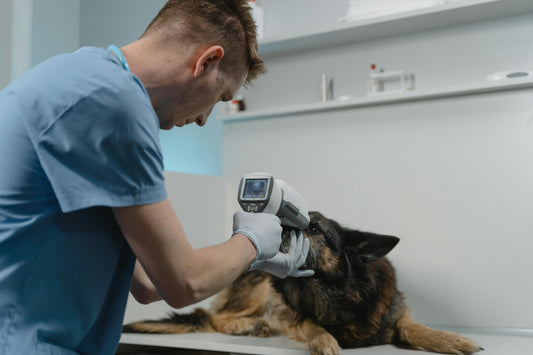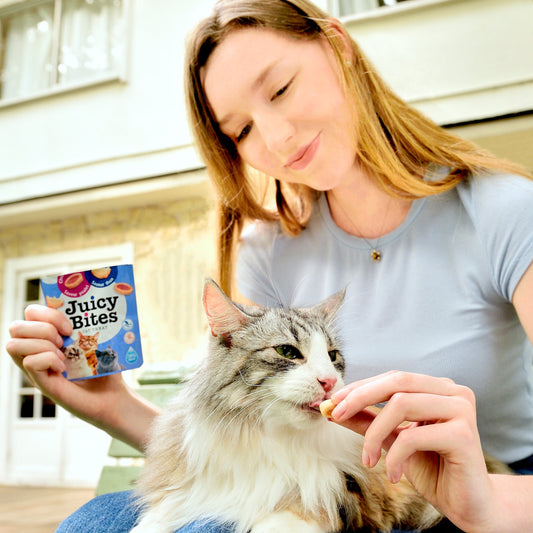Most cat owners are across the basics, from regular vaccinations to routine check-ups. But there’s one crucial area of feline health that often goes unnoticed: dental care. Just like humans, cats are prone to plaque buildup, gum disease, and painful tooth issues. That’s where professional cat dental cleaning comes in.
If your vet has recommended a dental procedure, you might feel a little uncertain about what it involves or how to get your cat ready. Here's everything you need to know about how to prepare for cat dental cleaning.
Why Dental Health Matters for Cats
Dental disease is one of the most common health issues affecting adult cats. Over time, plaque and tartar build-up can lead to inflammation, tooth decay, and even infections that affect the heart or kidneys. Unfortunately, cats are experts at hiding pain, so even if they seem fine, underlying issues may be developing.
That’s why vets recommend routine cat dental cleaning as a form of preventative care. These cleanings help remove plaque below the gum line, catch early signs of trouble, and ensure your cat isn’t silently suffering from oral discomfort.
How Do Vets Clean Cats’ Teeth?
So, how do vets clean cats’ teeth? The process is a little more advanced than a simple brush. Think of it as a deep, below-the-surface treatment that you aren’t able to achieve at home.
Your pet’s dental clean is performed under general anaesthesia. While your pet is asleep, your vet can:
- Perform a thorough oral exam
- Scale away plaque and tartar using ultrasonic tools
- Polish the teeth to slow future build-up
- Take dental x-rays to assess the roots and jaw
- Extract any teeth that are too damaged to save
Because of the general anaesthesia, x-rays, and potential extractions involved, professional dental cleans can be a significant investment, but one that can prevent serious health issues down the line.
How to Prepare for Cat Dental Cleaning
Getting ready for the procedure starts a few days before the appointment. Here’s how to prepare for cat dental cleaning so everything goes smoothly.
- Follow Your Vet’s Pre-Anaesthesia Instructions
Your cat may need blood tests to ensure they’re fit for anaesthesia. Most vets will also ask that you remove food the night before (typically 8–12 hours prior), but check what your clinic recommends.
- Consider Transport and Recovery
Make sure your cat is secure and calm in their carrier, both on the way to and from the clinic. After the procedure, they may be a little groggy or quiet, so set up a quiet space for them to rest.
- Ask Questions in Advance
Don’t be afraid to ask your vet what to expect: Will x-rays be taken? Could extractions be needed? Will they go home with pain relief? These questions help you feel more confident and better prepared.
How Long Does Cat Dental Cleaning Take?
A common concern among owners is how long does cat dental cleaning take. While every case is different, most cleanings last between 45 minutes to two hours, depending on the severity of the dental condition and whether extractions are involved.
The anaesthesia induction, cleaning, x-rays, and recovery all add up to a longer visit, so you’ll typically drop your cat off in the morning and pick them up later in the day. In terms of timing, the actual cleaning component may take as little as 30–60 minutes.
How Much Is a Cat Dental Cleaning?
Let’s be honest: vet bills can add up. So, how much is a cat dental cleaning expected to cost? For a straightforward clean, you’re looking at around $350 to $600. If things get more complicated, like needing x-rays or extractions, it can climb to $1,200 or more.
It’s not the cheapest vet visit, but it’s one that can make a real difference to your cat’s health and comfort in the long run.
Aftercare: What to Expect Once You’re Home
After the procedure, your cat may be sleepy or a little wobbly on its feet. Most cats recover quickly from anaesthesia, but it’s important to monitor their eating and drinking and look for any signs of bleeding or swelling.
To support long-term oral health and prevent further issues, your vet might recommend ongoing at-home care. This could include how to brush your cat's teeth, switching to cat healthy food, or using dental-specific supplements for cats, like water additives or chews.
Why Acting Early on Cat Dental Health Matters
Getting your cat in for a cat dental cleaning might feel daunting, but it’s a crucial step toward a longer, healthier life for them. Whether you’ve just noticed signs of dental disease or your vet recommended it as part of a check-up, knowing how to prepare for cat dental cleaning helps make the process easier for both of you.
If you're concerned about ongoing issues, be sure to learn about cat gum disease treatment and read more about stomatitis in cats: two common conditions that can seriously impact your cat’s comfort and quality of life if left untreated.




